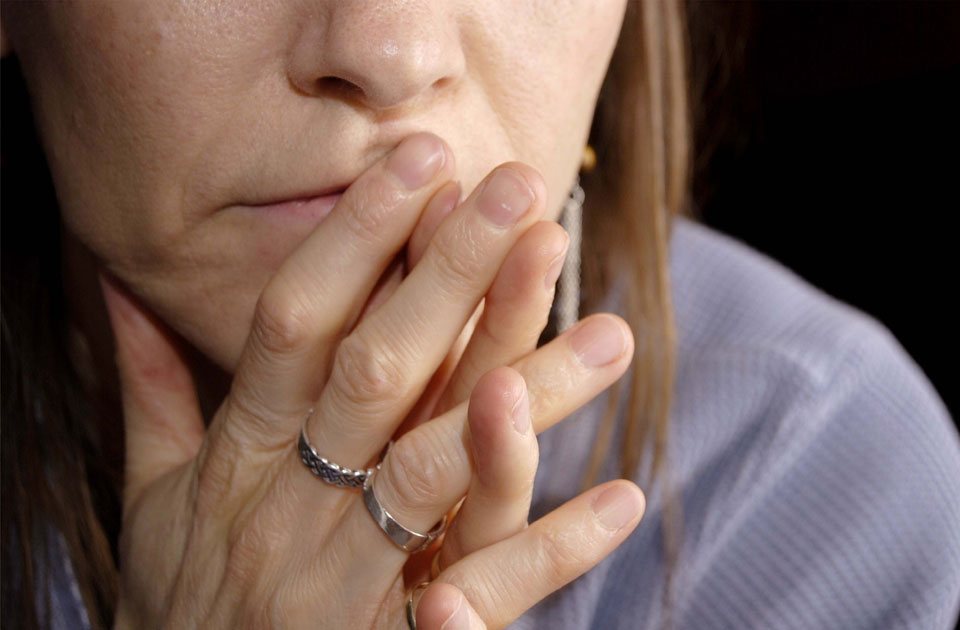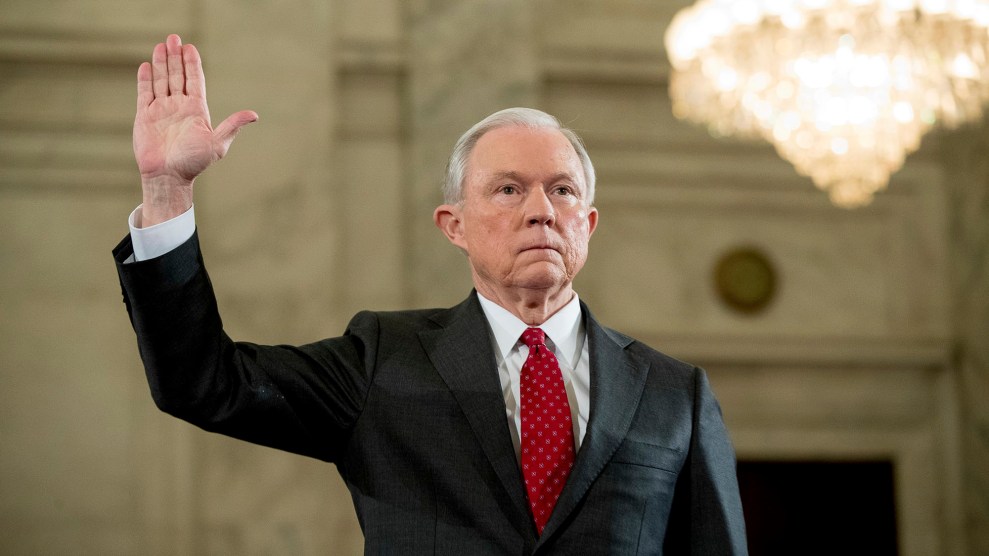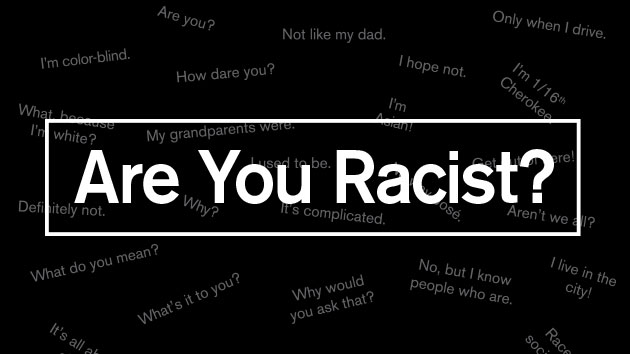
This is not Bonnie. (It's a stock photo.)<a href="http://www.istockphoto.com/portfolio/realitybytes?mediatype=photography&facets=%7B%22pageNumber%22:1,%22perPage%22:100,%22abstractType%22:%5B%22photos%22,%22illustrations%22,%22video%22,%22audio%22%5D,%22order%22:%22bestMatch%22,%22filterContent%22:%22false%22,%22portfolioID%22:%5B437524%5D,%22additionalAudio%22:%22true%22,%22f%22:true%7D">realitybytes/iStock</a>
On a September evening at the United Church of Christ in Sunnyvale, California, a dozen people are sitting in folding chairs arranged in a circle. Nearby, a plastic folding table is topped with cookies and fruit. (Coffee is notably absent.) The setup is basically that of an Alcoholics Anonymous meeting, except that the group, mostly older and mostly white, isn’t here to deal with chemical dependency. Rather, they have decided they want to better understand their own prejudices and take part in productive conversations about race.
Welcome to Racists Anonymous, the brainchild of the Reverend Ron Buford, the church’s pastor. Buford, who is black, was fed up with attending race talks where either he left feeling angry or white attendees left feeling guilty. During the presidential campaign, he watched Donald Trump and others sow racial division, and he decided to fight back. What would happen, he thought, if we treated racism like a disease, one that all of us suffer from?
Using AA as a model, he began hosting meetings last January, and before long he was sharing his program with friends at other churches. To date, he says, more than 90 congregations in four countries have requested the kit he’s put together, and at least six have established their own programs.
Trump’s ascendance—punctuated by his choice of Alabama’s Jeff Sessions for attorney general—has exacerbated tensions and brought about an increase in racist speech and hate crimes. White nationalists have gained national prominence, and many observers worry that unlawful discrimination will be overlooked, or even encouraged, in Trump’s America. The election also spurred conversation about whether progressives have done enough to reach rural America. On election eve, CNN commentator Van Jones called Trump’s win a “whitelash,” an anxious response to the nation’s growing multiculturalism.
The Reverend Buford hopes to ease these anxieties by bringing together regular people who have never had reason to confront their own conflicted feelings about race. “I don’t think we realized it was really as bad as it was,” Buford says. “We’re going to have to talk about it.”
Even before the election, police shootings of unarmed black men and racist incidents on college campuses were bringing about calls for a national dialogue. Businesses, universities, government organizations (including the Department of Justice), and many police departments have implemented training on diversity and racial sensitivities. And such sessions have become a part of many freshman college orientations.
But these programs may not be so effective, at least if the goal is to foster diversity. Frank Dobbin co-authored a study published in the Harvard Business Review this past summer titled “Why Diversity Programs Fail.” The authors looked at hiring and promotion at hundreds of businesses over 30 years to see whether diversity training had an effect. Many firms, they found, ended up with fewer women and minorities five years after the implementation of diversity training.
The main problem, according to Dobbin, is that the trainings are mandatory, and three-fourths of the firms he and his collaborators studied used negative messaging, often presenting the lessons in the context of avoiding lawsuits. “People react very negatively to being labeled as a problem,” Dobbin says. “They often rebel against efforts to control their behavior and their thoughts. If you take somebody that has wishy-washy views about something and you force them to go through training, often their views will become more negative.”
Buford wants to do things differently. His meetings are strictly voluntary, and there’s a “no-fixing” rule—self-improvement is the priority. The first step in AA is to admit you have a problem, and the same rule applies here. “Once you accept the fact that we’re all racists, it’s just varying degrees,” Buford told me. “In our culture, it’s impossible not to be a racist to some degree.”
During my visit, not long before the November election, Buford’s group was tackling step nine: “Making Amends.” The participants took turns reading prayers and passages from an adapted AA booklet, and offering anecdotes about times they felt they had judged someone too quickly. One person admitted to feeling uncomfortable being on an airplane with a passenger who appeared to be Muslim. Another woman, a former teacher, felt conflicted about not stepping in when white children in the schoolyard insisted on touching a black classmate’s hair. People of color in the group shared stories of encountering racism and prejudice.
“Hi, I’m Bonnie, and I’m a racist.”
Bonnie is one of the regulars here, a white woman originally from a rural community northwest of Milwaukee. She says she doesn’t recall any African Americans living in her town, but over time she became more aware of injustice toward blacks and other marginalized groups. She remembers cheering the Brown v. Board of Education Supreme Court decision when she was in high school, and she called Martin Luther King Jr.’s work “wonderful.”
But she’s still working on herself. “Somehow I can’t seem to remember those weird names,” she says of her introductions to black people.
“On the ‘weird’ names,” suggests a black woman across the circle, “you might want to use ‘unique,’ or ‘different.'”
“Thank you, thank you,” Bonnie replies.
Also important, Buford says, is to lower the bar for what counts as “racist.” Racism here is defined as any judgment based on someone’s external difference—not just skin color, but also things like gender and sexual orientation.
The toughest step, Buford and other RA participants say, is the first one. “That was one of the most difficult things I have ever had to articulate, because I have just thought that that was one of the worst things you could be as a human being,” says the Reverend Lori Hathner of the Coral Gables Congregational United Church of Christ in Florida. Hathner has been leading similar discussions at her church, reading from works such as W.E.B Du Bois’ The Souls of Black Folk. She plans to formally adopt Buford’s RA program.
Once you find the strength to make that admission, Hathner says, “it starts to break down some barriers and some walls and gives you some freedom to talk about things that I think people have been carrying inside of them.”
One potential pitfall of a voluntary program is that the people who probably need it the most won’t show up. The Reverend Nathan King, a pastor at Trinity United Church of Christ in Concord, North Carolina, launched his church’s RA program this past summer. He says it tends to draw people who are engaged in “subtle racism.”
“There are certainly people in the group, in the community, for whom the term ‘white privilege’ raises their hackles, and they bristle a bit when they hear that,” King says. “That’s a part of denial that just has to be addressed.”
The RA method is still a work in progress. Participants reading aloud from its adapted AA script occasionally find themselves referring to “hangover mornings” and such. But Buford is optimistic that with enough open-minded people, sufficient patience, and an assist from God, the program will help make a difference. “It’s kind of like a parent watching their kid learn,” he says. “You can’t make them. You have to wait and let them learn.”












